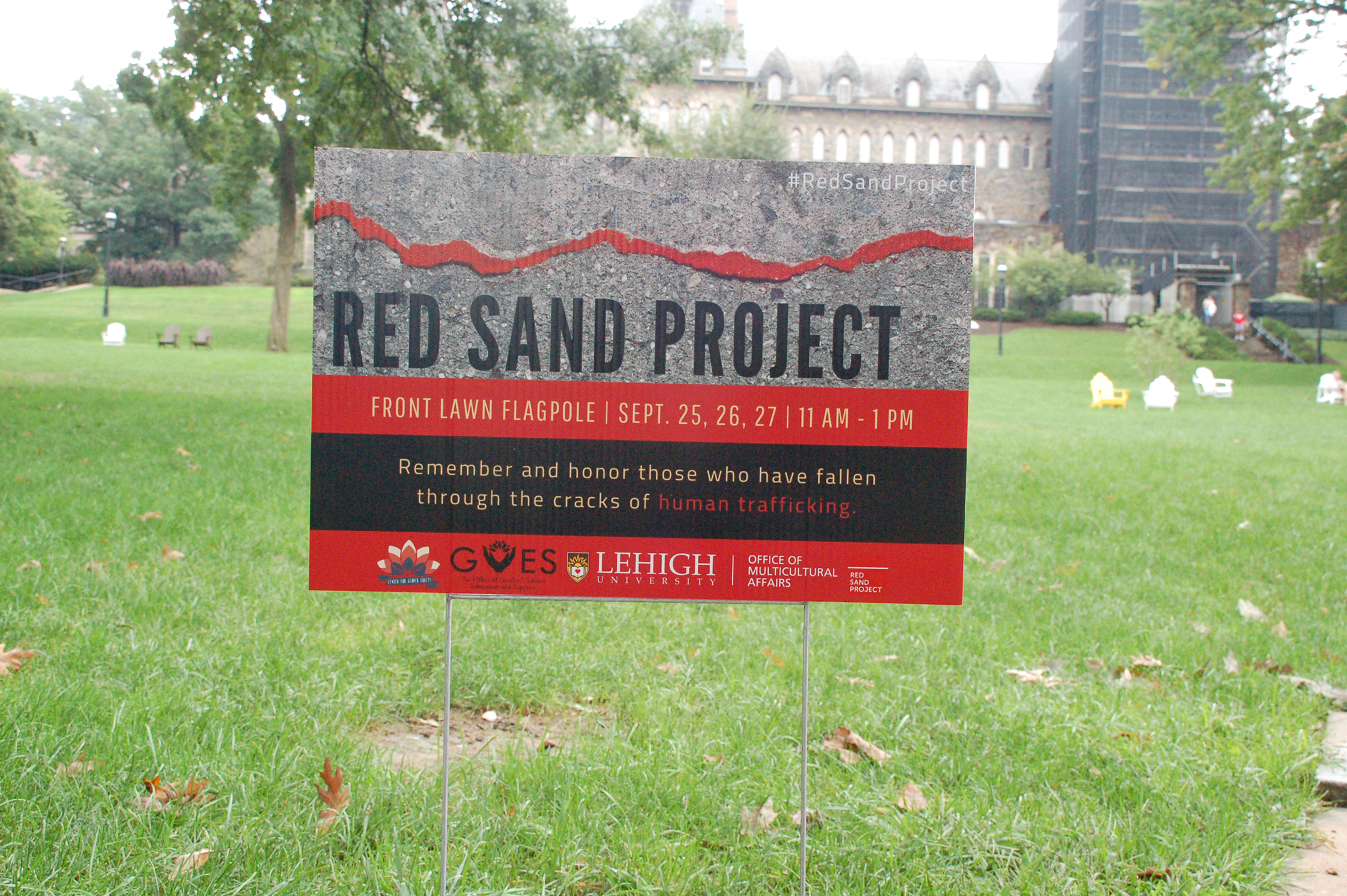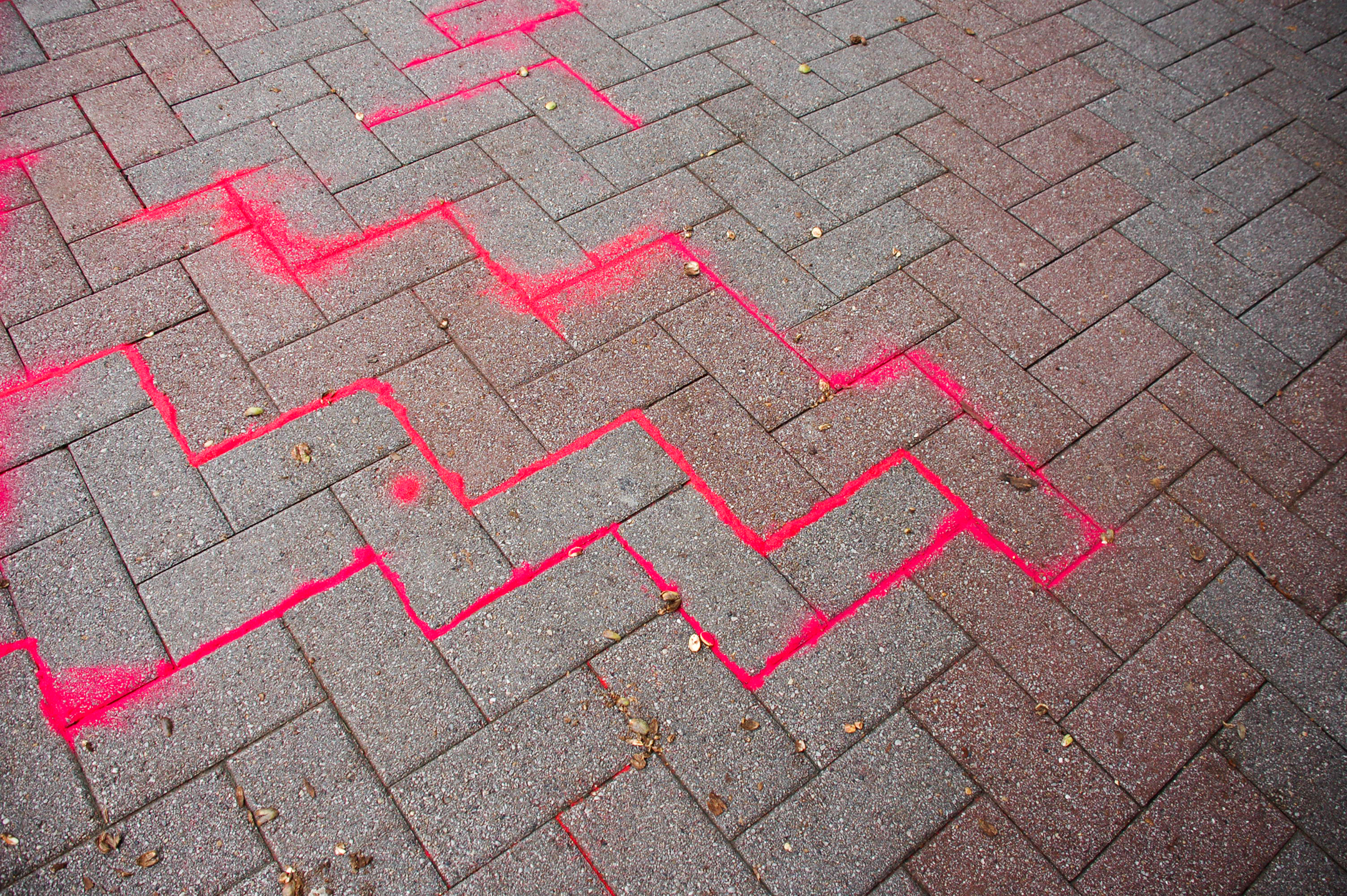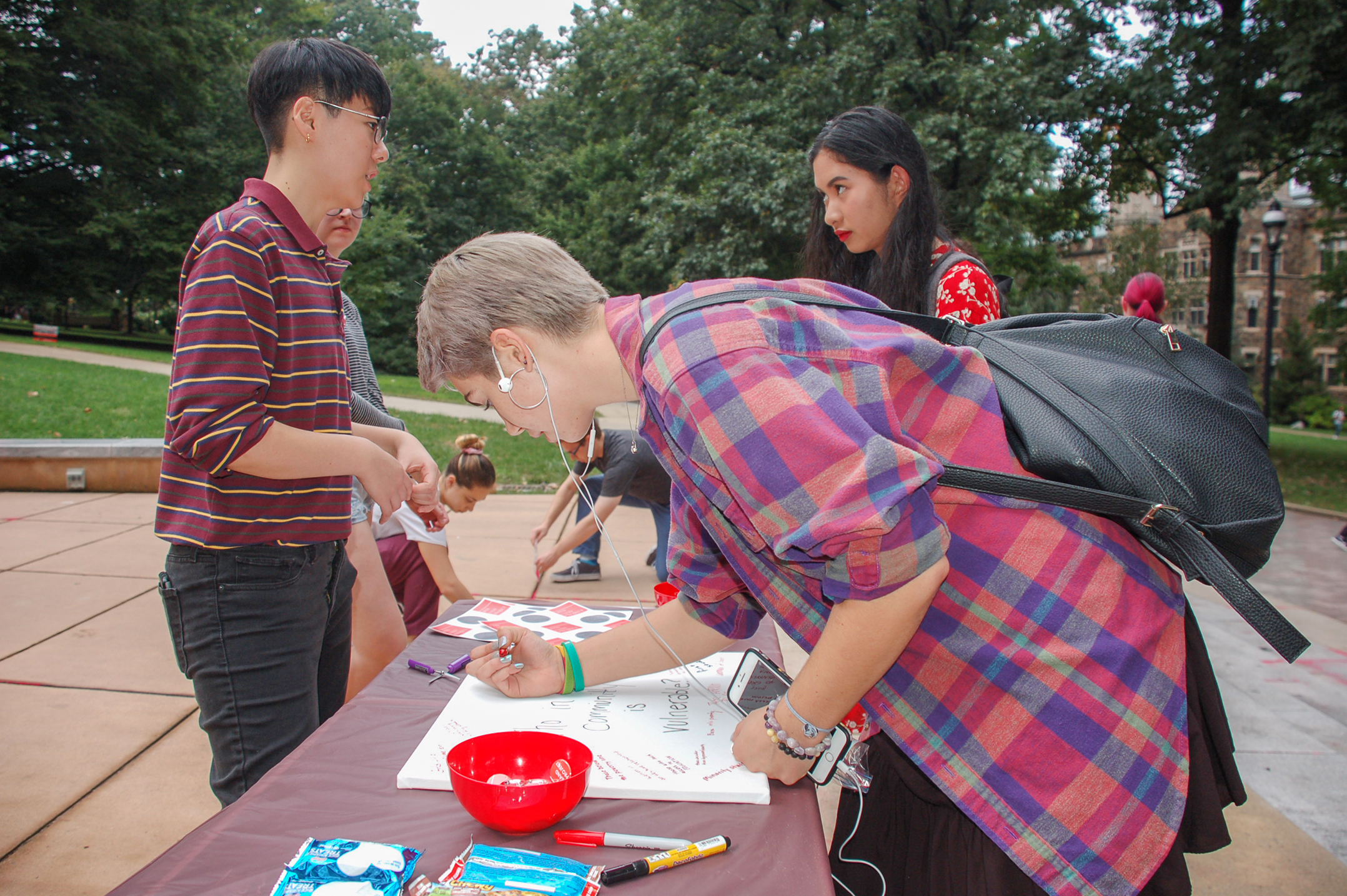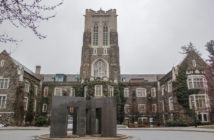The song “Rise Up” by Andra Day droned out the sounds of chatter and footsteps that typically serve as the tune of campus.
As the music played, students stopped by the UC Front Lawn to spread red sand in the pavement cracks, the intense color creating a stark contrast against the gray stones.
The unusual scene caught the attention of students and others who passed by, which was exactly the intention of the Red Sand Project. Led by the Center for Gender Equity, from Sept. 25-27, the project aimed to spread awareness of human trafficking.
Sara Machiniak, the associate director of the Center for Gender Equity, said the project was originally created by artist and activist Molly Gochman, who wanted to bring attention to human trafficking and the vulnerable populations that tend to end up in trafficking situations.
“What do these people do? They fall through the cracks of our systems, of our communities,” Machiniak said. “They go unnoticed just like cracks in the pavement.”
According to the Red Sand Project’s website, installations have taken place in all 50 states and in 70 countries around the world, with over one million people having participated.
Machiniak and Rita Jones, the director of the Center for Gender Equity, saw Gochman present at a conference. Machiniak said as they listened to her talk, they recognized parallels within their own work related to art and activism, which they shortened to “artivism.” From that moment, Machiniak and Jones knew they had to bring the project to Lehigh’s campus.
In general, Machiniak said college populations don’t know much about human trafficking.
“In some ways, it’s great because (they’re) sheltered from a very horrific part of our society,” Machiniak said. “However, that’s also a privilege. We want people to be aware of their privilege.”
Students came up and asked questions before taking a bag of red sand and choosing a crack on the pathway to fill. They also answered the question written on a large canvas, “Who in your community is vulnerable?”
Some answers included “minority students,” “those below the poverty line,” “women in abusive relationships,” “children whose parents are drug abusers” and “queer and trans people of color.”
Rei Ukon, ’21, an assistant for the “artivism” project, took the lead on the Red Sand Project at the university, describing it as an interactive art piece.
“It’s a visual representation of how it is very easy to overlook vulnerable communities that are more susceptible to falling through the cracks of human trafficking, as well as other social issues,” Ukon said. “Bringing (the project) to Lehigh’s campus is a way to bring attention to the vulnerable communities on our campus and in Bethlehem.”
In her high school sociology class, Kerry Shamnoski, ’22, learned that human trafficking is more common than people think. She came to the event because she wanted to be a part of bringing awareness to the topic.
“We need to show how major and how big it really is in our modern society,” Shamnoski said.
Although there was rainy weather during one day of the project, Machiniak said it did not have a negative impact on the outcome. Dana Teach, ’20, said the rain symbolized people wanting to wash away oppression that makes them uncomfortable.
The rain helped the sand move further into the cracks, which Machiniak said serves as an important reminder for students long after the event ends.
“The purpose of this project means a lot to me, too, being a first-generation student on campus and a queer student of color,” Ukon said. “The vulnerable communities apply to me, but also remind me of what we as a whole should keep in mind at Lehigh and beyond.”








Comment policy
Comments posted to The Brown and White website are reviewed by a moderator before being approved. Incendiary speech or harassing language, including comments targeted at individuals, may be deemed unacceptable and not published. Spam and other soliciting will also be declined.
The Brown and White also reserves the right to not publish entirely anonymous comments.
2 Comments
I’m thinking there is a difference, evidently not clear or ignored by students, between those vulnerable to trafficking and slavery and those who are vulnerable to other social issues. The Red Sand Project website seems to make the distinction. Not being present at the event all I know is what the article and associated picture indicate. I would say the Project is to combat “abuse for profit”. All abuse is bad but there is a difference between abuse that can be fought with education and abuse that needs to be fought with enforcement. Note that Project sand is not carcinogenic.
Thank you so much for sharing this article about the Lehigh Red Sand Project. It is inspiring to see how people are coming together to make a difference in our environment.